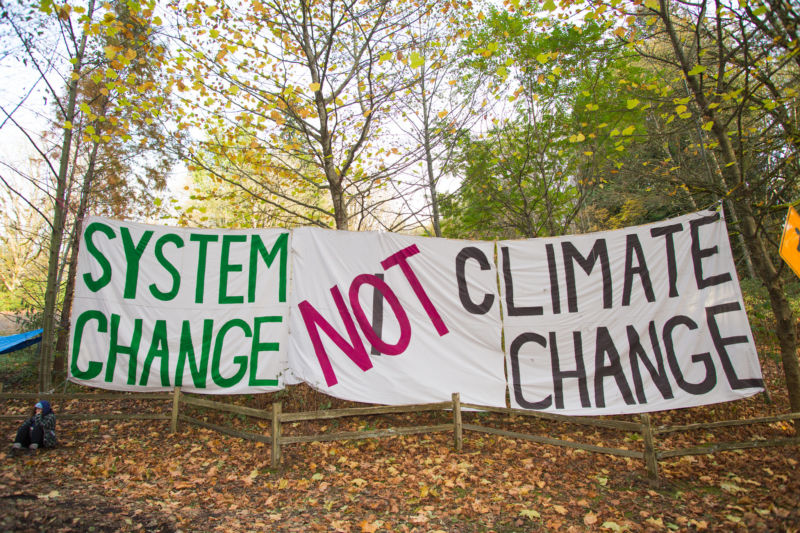To fight climate misinformation, point to the man behind the curtain
Ars Technica » Scientific Method 2019-01-18

Enlarge / Protest sign from a rally against the Kinder Morgan oil pipeline on Burnaby Mountain, BC. (credit: flickr user: Mark Klotz)
In 2018, Gallup’s annual environment survey found that overall concern about climate change in the US was roughly stable. But within that stability was a growing divide. The 87 percent of Democrats who reported in 2017 that they believe global warming is a result of human activity bumped up slightly to 89 percent in 2018. Meanwhile, for Republicans, that number dipped from 40 percent in 2017 to 35 percent in 2018.
How can the misinformation campaign driving this divide be fought? Just reporting and reiterating the facts of anthropogenic climate change doesn’t seem to work. A paper in Nature Climate Change this week argues that attempts to counter misinformation need to draw on the research that is illuminating the bad actors behind climate denialism, the money funding them, and how their coordinated campaigns are disrupting the political process.
Facts alone won’t cut it
“It is not enough simply to communicate to the public over and again the scientific consensus on human-caused climate change,” write Justin Farrell, Kathryn McConnell, and Robert Brulle in their paper, because “individuals’ preexisting ideologies and values systems can play a significant role in whether they accept or reject scientific consensus.”